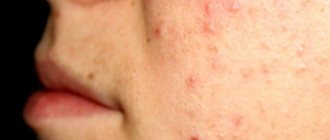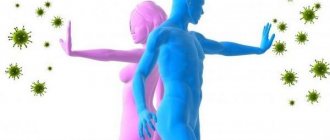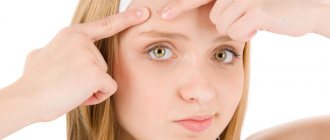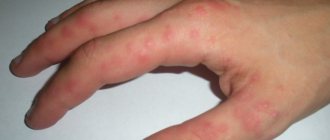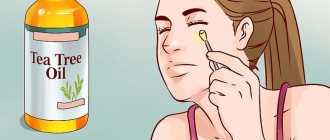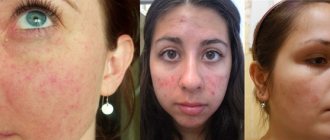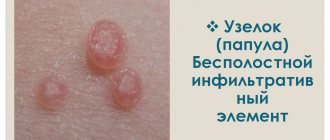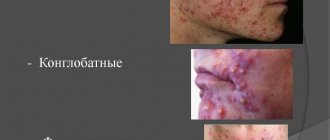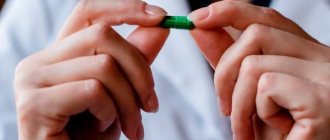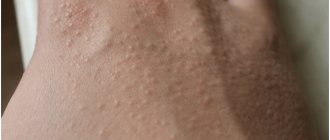A pimple is a small pustule or papule A pimple develops when oil glands or pores become clogged and infected, resulting in swollen red lesions filled with pus Also known as spots or zits, pimples are part of acne They most likely occur during puberty, but they can appear at any age.
During puberty, hormonal production changes. This can lead to the fusion of the sebaceous glands located at the base of the hair follicles. As a result, acne is most common during adolescence and during menstruation for women.
Acne most often affects the face, back, chest and shoulders. This is because these areas of the skin have many sebaceous glands.
Pimples without pus on the face: causes
Rosacea, commonly mistaken for acne, is a skin condition that causes pimples without pus on the central part of the face. But unlike acne, which typically features whiteheads and pimples on the face and back, rosacea is often associated with facial redness and painful bleeding. eyes.
And while acne and rosacea have a genetic link, acne is usually caused by hormonal stimulation and bacteria. On the other hand, rosacea is usually caused by extreme temperatures, diet changes, and stress. The condition is also often an inherited skin condition.
Allergic reactions and acne without pus
Poll: When did your acne appear? (Number of votes: 4295)
I've been suffering all my life
It's been a couple of years now
About a few months
Recently
To vote, click on the desired answer. results
Allergic reactions can come in many forms, so it's not surprising that some skin irritations can mimic breakouts. However, the key difference between acne and allergic skin reactions usually manifests itself in the case of allergies as intense itching, which is accompanied by red scaly patches and small pimples without pus.
An allergic reaction tends to be itchy, but acne and regular pimples are not. Acne can actually be painful, especially if you have large cysts. “If you constantly have allergic reactions, be sure to see a doctor.”
What is inflammatory acne or cystic acne, and how is it caused? When the pores are clogged and your immune system responds by sending white blood cells to fight the infection, the surrounding area becomes red and swollen or inflamed. This is called inflammatory acne.
Inflammatory acne occurs as a result of a break in the wall of a hair follicle or pore, leaking bacteria and oil into the surrounding skin. The closer to the surface of the skin these events occur, the smaller and smaller the breakout will be. If the break occurs deep inside the pore, you may experience a cyst - a large, hard, deep inside the skin Inflammatory acne is often throbbing and painful as blood flow increases to the area delivering white blood cells to contain and fight the infection.
There are different types of inflammatory acne depending on the size, redness, tenderness and scarring potential. Stopproblem camouflage foundation, which in addition to camouflage also treats acne on the face!
Treatment
Removing acne on your own can lead to inflammation rather than cure it. Treatment of ulcers requires an integrated approach.
It is recommended to begin therapy by getting rid of the purulent rash. Then the root causes are eliminated, and the body’s metabolic processes are normalized.
The first rule is to contact a specialist in a timely manner. Modern treatment methods in beauty salons make it possible to do this.
Treatment options
- Liquid nitrogen – freezing of pustular rashes, their destruction. Cryotherapy is the basis of this method.
- Distilled water – ozone therapy technology.
- Ultrasound – deep cleaning and removal of dead cells.
- Chemical peeling – allows you to remove dead skin cells.
- Mechanical cleansing is preventative skin care.
- Mesotherapy allows you to individually select effective medications for each skin type, taking into account the degree of disease progression.
Traditional medicine in the treatment of pustular acne
In order to cure this disease, there are many recipes from natural plants. These are decoctions, ointments and other compositions prepared mainly for cleansing and restoring the skin.
The properties of the plant are used to heal the surface of the skin. The treatment is characterized by simplicity, ease and relative cheapness.
Remove all needles from one aloe leaf and cut it in half. The resulting pulp is applied to the purulent wound and secured with a plaster. The procedure is carried out before bedtime, in the evening.
Advice! It is recommended to use a bactericidal patch. An open wound increases the possibility of infection. Its drainage effect will help remove the purulent contents of the wound.
Medicines
If there are reasons that do not allow you to use traditional medicine, you can use medical ointments:
- ichthyol ointment;
- Vishnevsky ointment.
These drugs have an antiseptic effect, kill the carrier of the infection, and remove the purulent contents of the pimple out. In addition, after cleansing the wound, it heals faster, since the action of the ointments promotes the regeneration of the dermis. Before each application of a fresh layer of ointment, the affected area should be cleaned.
Important! The use of medications or folk remedies to cleanse the skin significantly accelerates the healing process of purulent wounds, and timely preventive skin care completely eliminates relapses of inflammatory processes.
A pimple is a small pustule or papule A pimple develops when oil glands or pores become clogged and infected, resulting in swollen red lesions filled with pus Also known as spots or zits, pimples are part of acne They most likely occur during puberty, but they can appear at any age.
During puberty, hormonal production changes. This can lead to the fusion of the sebaceous glands located at the base of the hair follicles. As a result, acne is most common during adolescence and during menstruation for women.
Acne most often affects the face, back, chest and shoulders. This is because these areas of the skin have many sebaceous glands.
Subcutaneous internal and painful pimples without pus
Large, deep and painful bumps, blackheads and cysts fill initially with blood before filling with pus. They can linger beneath the surface for weeks or even months and can eventually harden. They can also leave deep scars and welts after they disappear.
Nodules are larger than normal pimples without pus, larger than pustules and papules, and initially form in the deeper channels of the skin. They are sensitive to the touch and can be quite painful. They develop when subcutaneous oil and bacteria penetrate deep into the pores, infecting adjacent follicles. Nodules. can harden into deep cysts and can leave deep scars on many levels and layers of the skin.
Cystic nodular acne is the most severe form of acne, which can be found both without pus and with its presence. Cystic acne can often lead to the formation of scars after it heals. Such acne is also most common in teenagers and young adults under 23 years of age. Cystic acne or any form of cicatricial acne requires immediate attention from a dermatologist. Your doctor will have the best solution for treating nodular acne.
Types of purulent acne
A papule is an infected acne pimple, which is characterized by painful sensations and the presence of a small reddish bump. Pus is not visible to the naked eye. Scars do not remain after they disappear.
Important! If papules appear multiple times, you should consult a doctor, as this may be evidence of the development of horny eczema, amyloidosis, psoriasis, syphilis and other diseases in the body.
A pustule is a severe form of papule. It looks like a rounded-superficial or deep tubercle filled with pus. A deep pustule forms an ulcer, which eventually becomes covered with a crust. After it falls off, a scar remains at the site of the pimple. The skin around the lesion is inflamed, which is why it is red. The form of pustules is:
A follicular abscess of staphylococcal nature affects the hair column and is of streptococcal nature.
- A nodule is a papule, the size of which exceeds one centimeter. The deep layer of the skin is affected, so the pain is pronounced. A healed nodule leaves a pigment spot, atrophic or keloid scar of a large size.
- Cyst - formed in a severe form of purulent pimple, which consists of several blackheads filled with pus and processed sebum. The cysts form a chain connected by the fistula duct. A cystic conglomerate is characterized by a bluish tint, is difficult to treat, and also leaves deep scars on the skin when healing.
Pimples without pus on the face and body: treatment
There are quite a large number of both medications and home remedies for acne treatment.
Toothpaste for acne
Toothpaste is quite effective for skin whitening and quick treatment of skin pimple, especially when applying white paste to the form of pimples without pus on the face.
Read more about the instructions for using toothpaste and the effectiveness of the treatment result in the next article!
Baking soda
Combine a small amount of baking soda with some water and apply it directly to your pimple using a cotton pad. The effect of using this product is the same as toothpaste; the difference between these products is only a slightly less sticky consistency and less minty smell!
Salicylovo - zinc paste
A unique acne remedy, containing two such powerful components of salicylin and zinc paste, can have a powerful effect on getting rid of acne on the skin of the body or face, as well as remove any traces after getting rid of them on the face.
Read more about the capabilities of Salicylic-zinc paste!
Erythromycin ointment
To treat acne without pus, use Erythromycin ointment, which is an antibiotic anti-inflammatory agent that quickly relieves acne on the face.
Use face masks for acne
Use one of the homemade face mask recipes you can find here on your face for acne. Such masks will pull out the cyst from inside the pimple and reduce its size significantly.
Tea tree oil
Treat your skin with tea tree oil. Tea tree oil is a popular and effective natural remedy for treating acne. Tea tree oil provides antimicrobial and anti-inflammatory activity. This means it can help reduce the swelling of your pimple trapped under the skin, as well as fight the bacteria that causes these breakouts to appear on your face.
Mix one drop of tea tree oil with nine drops of water Instead of water, you can dilute tea tree oil with an oil such as olive or mineral oil for better effect You can also dilute it with aloe vera gel Soak a cotton swab or cotton swab in tea tree oil Apply it on a pimple Wait for 10 minutes, then wash your face with warm water. You can resort to this procedure three times a day.
Make sure you don't get tea tree oil on your eye area because it can cause irritation.
Before applying tea tree oil to a pimple, test your skin's sensitivity to this product on a small area of skin Apply one drop of tea tree oil to your wrist and wait for about 15 minutes If you do not see any negative reactions, then you can safely use this product on your face from acne.
Care for inflamed facial skin
And, of course, no inflammation will go away from the face if you do not provide the skin with proper care.
- Drug treatment is carried out only with the permission of a doctor and under his strict, constant supervision. Self-medication can provoke even more extensive and widespread inflammation on the face, which may require serious hospital treatment.
- Be sure to normalize the regimen and composition of your diet . Limit the amount of smoked, sweet, fried, and fatty foods in your diet. Include as many fresh juices, fruits, herbs, vegetables, and nuts as possible.
- Ensure that the inflamed area is completely inviolable: do not touch it with your hands and limit any other contact with this area. It is strictly forbidden to squeeze out ulcers, blackheads, and pimples on your own at home : this can cause infection to enter the wound. Mechanical cleansing of the face during inflammation is allowed only in salon conditions.
- Try not to injure your skin with scrubs , despite their excellent cleansing ability. It is better to replace it with a special gel for problematic or sensitive skin .
- You will have to avoid hot baths and washing..
To care for inflamed skin, you need either slightly warm, cool, or room temperature water. Moreover, it is advisable not to take it from a water supply system that does not have filters. It’s better to buy non-carbonated mineral water. Instead of water, it will be much more effective to use decoctions and infusions of medicinal herbs that have an anti-inflammatory effect: chamomile, calendula, St. John's wort, yarrow, parsley, string, oak bark, etc. Pour two tablespoons of chopped herbs into two glasses of boiling water, leave for an hour, strain, wash .
- Twice a week, clean your pores using steam baths with the herbs indicated in the previous paragraph (a glass of infusion per liter of water), or with essential oils that have antibacterial and anti-inflammatory properties - tea tree, lavender, jojoba, citrus fruits, rose hips (10 drops per liter water).
- any folk anti-inflammatory skin remedy (especially homemade masks) first on the wrist or inner bend of the elbow to avoid an allergic reaction later.
- Take multivitamin complexes (at least twice a year) to strengthen the immune system and protect the nervous system.
- Get regular medical examinations (once a year) to identify internal diseases that can trigger inflammatory processes on the skin of the face.
If you want to eliminate the inflammatory process on the face in the shortest possible time and as safely as possible for your own skin and your own health, try to find out the causes of this unpleasant phenomenon and consult a doctor in a timely manner.
In any case, even if the reason is not so global, it will not be superfluous. Recommendations from a specialist will help you solve the problem and choose from a variety of anti-inflammatory drugs the most effective and efficient one in your case.
The main indicators of a healthy body are cleanliness and smoothness of the skin. Defects on it indicate the presence of unhealthy processes in the body.
Pustular acne is one of the types of skin lesions that are included in a number of inflammatory diseases. Excessive secretion of the sebaceous glands is the main cause of inflammation.
